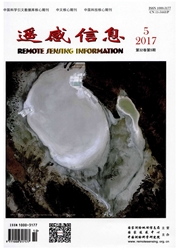

 中文摘要:
中文摘要:
对Moravec和SUSAN这两种经典的特征提取算法进行了深入研究,以Matlab软件为实验平台,验证了它们的可行性。通过对实验结果的比较,分析了Moravec算子中运用"抑制局部非最大"思想的优势、局限性和适用性;在SUSAN算子中通过考虑提取过程中的误差影响因素,为算法中几何阈值和灰度阈值的确定和模板选择提供了依据,对其影响范围进行了定量分析。指出在两种算法实现过程中,Moravec算子由于对如何确定判断窗口的大小不能给出可靠的依据,加之缺少对影像的先验知识,无法了解研究区域角点分布状况。因此,仅仅用这种方法很难获得完全准确的角点特征;对于SUSAN算子,根据分析结果对几何阈值加设一个下限d,在很大程度上排除了孤立噪声点的干扰;并运用"重心距离法",即通过判定SUSAN重心与核心点连线上的像素点的边缘初始值的相近条件,消除了虚假的角点,从而实现了对算法的优化。
 英文摘要:
英文摘要:
The methods of building corner extraction based on point feature are widely used in the image registration based on the features,multi-source image fusion and the city three-dimensional modeling.This paper based on two classic algorithms,Moravec and SUSAN,has tested the feasibility of them through Matlab.With comparison of the experiment results,the paper has analyzed the advantages,limitations and applicability of the idea called "local non-maxima suppression" in Moravec algorithm;also analyzed the influence range of the thresholds,and offered basis to choose a correct template and determine the geometry and gray threshold in SUSAN operator,considering the error factors.And it points out that there is no method to obtain the information of the corner's distribution,due to loss of a reliable basis to determine the size of search window in Moravec,as well as loss of a prior knowledge on image.For the SUSAN algorithm,According to the results and analysis,the paper designed a lower bound for geometry threshold removing the isolated noises to a certain extent,and eliminated false corner point by a "gravity center distance method",which judged the similarity between gravity center of SUSAN and its geometry center,achieving the prospective result in turn.
 同期刊论文项目
同期刊论文项目
 同项目期刊论文
同项目期刊论文
 期刊信息
期刊信息
